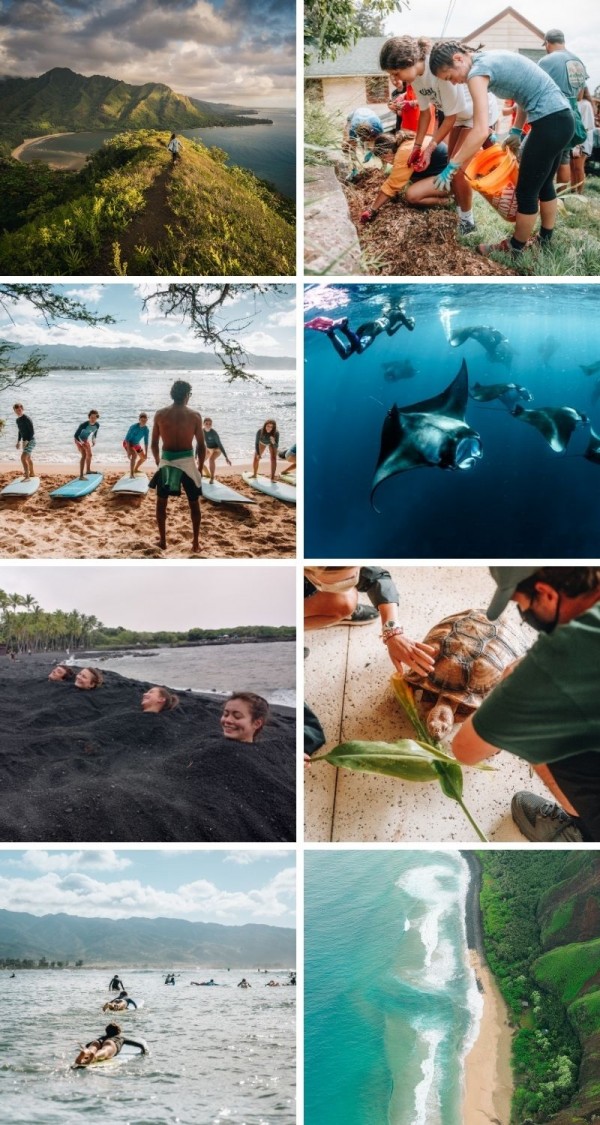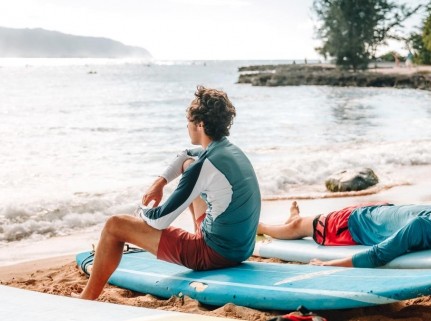
The volcanic island chain of Hawaii is a traveler's dream. The Big Island is rich in culture and community and Oahu has coastal vibes like California and mighty peaks like Colorado and this program is all about diving in to understand local issues, all while having an epic time along the way. Our endless to-do list includes stargazing from the summit of Mauna Kea, walking on a moonscape of black lava in Volcanoes National Park, roaming a green sand beach, surfing point breaks, and spotting turtles.
We will immerse in the iconic locations around Hawai’i & Oahu Island while capturing the complete picture of life in Hawaii and adding value along the way. We will learn to hula, make frangipani leis, prepare an Imu feast, and check out the canoes Hawaiians traditionally used to roam across oceans.
During this four-week summer program, a key focus will be to connect to the land and sea. We will adopt sustainable living skills by rolling up our sleeves at a local non-profit organization and learning how to farm with permaculture principles. We will get hands-on with an innovative marine conservation project, working on a fishpond restoration project to protect and support fragile sea life. Participants will walk away with a Certificate of Environmental Conservation with 40 hours of service to boost their resume, and the memories will last a lifetime. Emerge from time spent in the jungle and ocean feeling wholesome and empowered.
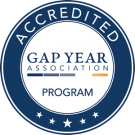
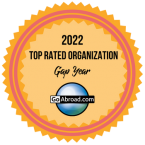
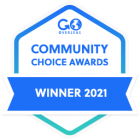
✓ Want to see a lava landscape formed in recent volcanic activity
✓ Are enthusiastic about conservation and agriculture
✓ Want to learn to surf on some of the most iconic beaches in the world
✓ Love activities like hiking, snorkeling, and yoga
✓ Are interested in immersing in spectacular nature and Hawaiian culture
✓ Want to receive a Certificate of Completed Service Hours to add to your resume
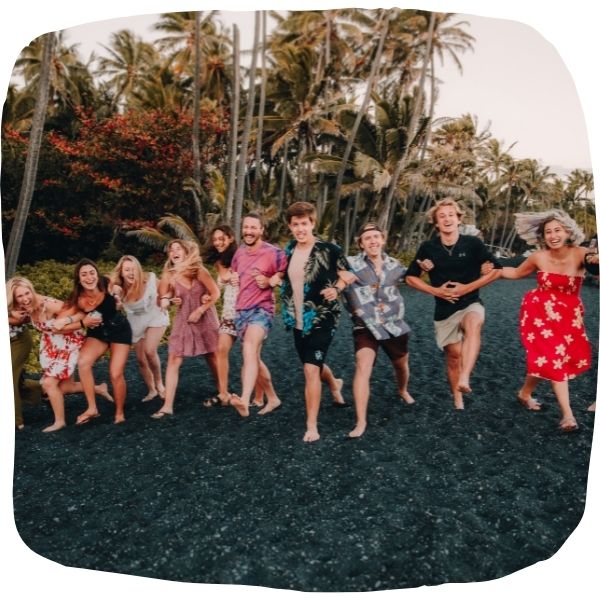
Over the course of this program, I grew more than I ever could have imagined. I gained a more solidified perception of my identity, and continued to develop aspects of it that I never realized I carry. Between nights spent under starry skies and days listening to the gentle crashing of waves, I have begun to understand what it means to be authentic. No one is a stranger to self doubt, however, my experience in Hawai’i aided me in overcoming the obstacles put in place by my own fear of failure. I will never forget my experience here on the Big Island, and I will forever cherish the memories.!"
- Alexis Steinert, 2021
Get the full Summer Program run-down in our catalogue. This catalogue provides information about Pacific Discovery's values and program design, as well as program descriptions and testimonials!
Aloha! You will be met by your program instructors in Hilo, known for its unbelievably lush rainforest landscape. We will get off the beaten track and head to Pahala in the district of Ka’u for the first days of the program. The south is known for its black sand beaches and abundant wilderness, and we will be amongst it all this week.
We will get to know about each other and Hawaiian traditions while we prepare an Imu (this is a form of underground oven, and is one of the oldest Hawaiian traditions!). We’ll ground taro leaves, set hot stones and prepare food whilst experiencing song and dance from our local hosts. When the Imu is ready, we’ll take the food from the ground to the table, ready to feast!
There are so many unique landscapes on this diverse island moonscape. We head to the most rugged, southern section of the island to explore Volcanoes National Park. We will learn about the impacts the lava flows have had on the local farming practices, and explore the ground carpet of lava rock and the stunning seaside cliffs on the coastline. There are also black and green sand beaches to explore along the way; every day brings spontaneous adventure within the program!
This week we base ourselves in Hilo. Some days will begin with yoga classes to stretch out and start the day feeling centered. We’ll explore the Botanical Gardens, Shipman’s Trail, Akaka and the mysteriously misty Rainbow Falls.
We have an incredible opportunity to get out into the water with a locally run organization that focuses on fishpond restoration and ocean conservation. We’ll be working alongside experts learning about the marine ecosystem and how to protect and encourage sea life in these beautiful pockets of the ocean that surround Hilo. This is really fun and rewarding service work, and highlights some of the innovative environmental efforts being done across the state! Prepare to get stuck in and a little wet over these days!
We will feel on top of the world while stargazing from the summit of Mauna Kea. Mauna Kea is a dormant volcano which sits at nearly 14,000 feet above sea level - but when measured from the base (the majority of the volcano is underwater), it is 33,500 feet tall, topping it as the tallest mountain in the world! This is one of the two huge volcanoes that will always dominate the view as we travel across the island.
At the beginning of week three, we head to Waimea for a week of hands-on and interactive service learning. We will roll up our sleeves and get involved in the efforts of a non-profit organization while learning all about the legends and land from Aunty K! This grassroots organization was founded for research and educational purposes to uncover how Hawaiians were able to sustain rain-fed intensive farming for centuries; and how it may inform our current efforts to live sustainably.
We will learn about the importance of the canoe in the local communities. Similar to the way that the hula is more than just a dance, canoes are more than wooden boats in traditional Hawaiian culture. Polynesian voyagers first discovered the Hawaiian islands, and canoes played a key role in the flourishing of Hawaiian life. Canoes were an important part of everyday life, especially for traveling and fishing, and locals are still heavily involved in canoe voyaging practices.
Before the week is over we are heading to Oahu. We will get straight into the water for three days of surf lessons in Haleiwa! Surfing is all about having a seriously good time. Sunshine, salt water, friends, could it get better?! We take our lessons from a local legend, who will have us catching party waves in no time. We will cater to your skill level, whether you’re a beginner or you’ve been hanging 10 for years.
These days are physically exhausting, and we learn about muscles we didn’t know existed! In the afternoons there will be quite a bit of rest and relaxation, so we’ve got plenty of time to recharge our batteries and get to know each other. We will go out snorkeling in the reef-protected Shark Cove (the land shape resembles a shark!) and look for turtles. The turtles in Hawaii have a strange habit of sunbathing (they don’t do this anywhere else in the world) so look out for tanning turtles on your way to the water!
We will make our way back to Honolulu to stay at Sun Farm Yurts. We will get our snorkeling gear on to head out into the famous Hanauma Bay. Voted Best Beach in the United States in 2016, volunteers have a booth located on the beach to help visitors learn about the conservation of the reef and the types of fish that live there. It’s so special that Hawaii has created a ticket system so that fewer people are there at once and we can enjoy the experience for ourselves.
Having traveled around two of Hawaii’s islands by now, the Big Island and Oahu, we will discuss the contrasts between the two and the impact tourism has had on Hawaii. We’ll spend these days partnered with local communities. We will also give a helping hand to the Hawaiian food bank, which serves food in a variety of ways depending on the needs of the communities. These include food pantries, homeless shelters, soup kitchens, domestic abuse shelters, rehabilitation centers and more. We can make a difference by inspecting the food products, sorting them and boxing them for distribution. We will feel good knowing that we have played a part in ensuring no one in Hawaii’s ‘ohana’ (family) goes hungry.
At the end of this incredible adventure, we admire the Moana Falls as they cascade 150 feet down the mountainside, and walk around gardens that boast a collection of 5,660 thriving tropical plants and trees. When our feet have grown tired, we will give our arm muscles a workout during an afternoon of ocean kayaking. We will search for secret spots throughout the bay, keep our eyes peeled for marine life and give ‘kayak surfing’ a go when paddling back to shore.
Sadly, the time has also come to begin processing the once-in-a-lifetime experiences that the last 30 days have taken us on. We are sure that you will reflect on how amazing it was to have a chance to take a break from everything, learn about ourselves, but also prioritize time to experience and have gratitude for our own beautiful and historic culture and environment.
*Each week there will be some designated free time so that you can catch up on email, laundry, rest, and explore.
**Pacific Discovery reserves the right to alter and/or change the order of the itinerary, the focus of the projects or the activities themselves due to dates, availability, and safety precautions.
✓ All in-program travel and transport, excluding flights
✓ All accommodation
✓ All meals
✓ All expeditions, activities, excursions, volunteer projects and entry fees as described in the itinerary
✓ Experienced Program Instructors and local guides
✓ Informal lectures from resident experts on conservation and eco-tourism
✓ Core Activities that encourage shared group reflection
✓ Certificate of Environmental Conservation with 40 hours of service
![]()
![]()
![]()
Medium Activity Level: Anyone with an average fitness level and an enthusiasm for the outdoors and new experiences will have a great time on this summer internship! You will need to be prepared for some physical work during the volunteer projects on the program, like preparing beds for planting or the removal of invasive plants.
![]()
![]()
![]()
Medium Camping Level: Be prepared to spend some time out in nature. You'll love the experience of camping, staring at the campfire, breathing in fresh air and stargazing the night away.
![]()
![]()
![]()
High Learning Level: You will be able to make a difference to the local community during your stay. Be prepared to get your hands dirty and do some hands-on learning about local issues.
Our accommodation will be a mix of camping (tents supplied) and comfortable, clean hostels and lodges. Laundry and Wi-Fi facilities will be available most days, except during the weeks in the field on the volunteer projects and on expeditions. Accommodation is diverse, comfortable and carefully chosen to fit our needs.
While in your mind you might conjure up wonderful images of tropical fruit platters, sumptuous salads, ceviche and gourmet seafood delicacies, the reality can be quite different on the Big Island of Hawaii. As it is remote and most food has to be shipped from the mainland via Oahu, much of the available food tends to be long-life, tinned or dried, or junk food. While fresh fruits and vegetables are grown locally, they won’t have the same array that you will be used to at home, and anything not grown locally can be expensive. Any snacks are at an additional cost, which we recommend budgeting around $15 per day for.
On our Hawai programs there is a lot of student-led cooking, where in small groups the students plan, budget and cook for the others, teaching them planning and cooking skills, as well as managing a budget. Our instructors will be there to lend a hand with the planning and suggest recipes suitable for the group, and we find that the student-led approach is a great step in personal growth and development, especially in preparation for college life. Your Instructors will lead you here to learn to budget by purchasing bulk foods, purchasing non-branded items and focussing on local foods.
Regular food to expect:
Local Hawaii Cuisine notes: Rice is a popular staple and there’s plenty of fruit such as locally grown avocados and tropical fruits like apple bananas, papaya, and dragonfruit. Seafood, sushi, fresh fish and shrimp. SPAM - spam sushi and spam poke bowls! Hawaii cuisine has a strong asian influence so you’ll find lots of ramen and kimchi!
To make things easy for you, we partner with a full service travel agency that can arrange flights, appropriate travel insurance and post program arrangements for our students.
They have access to a "Cancel For Any Reason" or CFAR travel insurance for US citizens in participating states. This optional travel insurance product allows travelers to cancel for any reason whatsoever up to two days prior to departure and still receive a significant refund. This allows you to keep planning for the future while avoiding the stress and the financial worry of canceling a program if you need to.
Our program locations and itineraries have been carefully selected and modified to minimize risk of exposure to anyone outside the group with most being located in rural areas. This allows for a more focused learning environment, as well as a safe haven from the stress of our modern world.
We've been working hard and watching closely to any CDC recommendations about group sizes and testing requirements to come up with options that will allow you to have a safe, healthy, and stress-free Gap Year experience. We do the hard work so you can come and enjoy the fresh air, adventures, and new friends!
We have been running successful programs in Spring, Summer and Fall 2021. The students shared their experiences in testimonials and wrote their stories down in blog posts - feel free to have a look.
Check out the information on our COVID-19 page to find out more about our Covid-19 policies, procedures and updates.
We have answered the most frequently asked questions in the FAQ Section. If you still have any other questions, feel free to schedule a call with our admissions team for more information.
